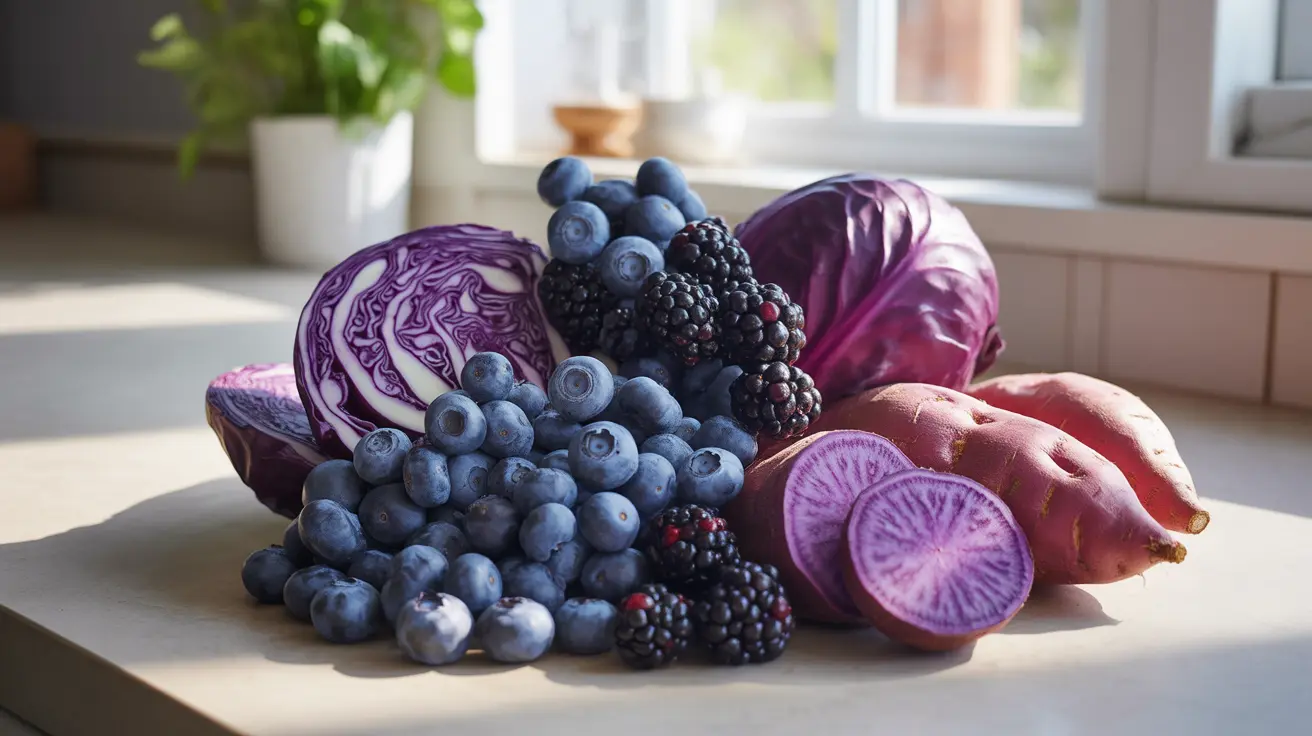Anthocyanin foods have gained significant attention in the health and nutrition world, and for good reason. These naturally occurring plant pigments not only give fruits and vegetables their vibrant red, purple, and blue colors but also offer remarkable health benefits. Understanding which foods contain these powerful compounds and how to incorporate them into your diet can be a game-changer for your overall health.
In this comprehensive guide, we'll explore the best sources of anthocyanins, their health benefits, and practical ways to include them in your daily meals. We'll also address common questions about supplementation and potential side effects.
Top Sources of Anthocyanin-Rich Foods
The following foods are excellent sources of anthocyanins and can be easily incorporated into your daily diet:
Berries
Berries are among the richest sources of anthocyanins, including:
- Blueberries
- Blackberries
- Strawberries
- Raspberries
- Elderberries
Purple and Red Vegetables
Many deeply colored vegetables provide significant amounts of anthocyanins:
- Purple cabbage
- Purple sweet potatoes
- Red onions
- Purple carrots
- Eggplant
Other Rich Sources
Additional foods that contain substantial amounts of anthocyanins include:
- Black rice
- Purple corn
- Red wine
- Purple grapes
- Black soybeans
Health Benefits of Anthocyanin-Rich Foods
Heart Health Benefits
Research suggests that regular consumption of anthocyanin-rich foods may support cardiovascular health by:
- Helping maintain healthy blood pressure levels
- Supporting proper blood vessel function
- Promoting healthy cholesterol levels
- Reducing inflammation markers
Brain Function and Memory
Anthocyanins have shown promising effects on cognitive health, particularly in:
- Supporting memory retention
- Promoting better focus and concentration
- Potentially slowing age-related cognitive decline
- Protecting brain cells from oxidative stress
Anti-Inflammatory Properties
These compounds demonstrate significant anti-inflammatory effects, which may help:
- Reduce chronic inflammation
- Support joint health
- Enhance immune system function
- Promote overall cellular health
How to Include More Anthocyanin Foods in Your Diet
Incorporating anthocyanin-rich foods into your diet can be both delicious and simple:
Meal Ideas
- Add mixed berries to breakfast cereals or yogurt
- Include purple cabbage in salads and slaws
- Serve purple sweet potato as a side dish
- Use black rice in stir-fries or grain bowls
- Snack on fresh or frozen berries
Frequently Asked Questions
What foods are highest in anthocyanins and how can I include them in my diet?
The foods highest in anthocyanins include blueberries, blackberries, purple cabbage, black rice, and purple sweet potatoes. You can include them in your diet through smoothies, salads, side dishes, and as healthy snacks throughout the day.
How do anthocyanin-rich foods benefit heart health and help lower the risk of chronic diseases?
Anthocyanin-rich foods support heart health by helping maintain healthy blood pressure, improving blood vessel function, and reducing inflammation. These properties, combined with their antioxidant effects, may help lower the risk of various chronic diseases.
Can eating more anthocyanin foods improve brain function or memory as I age?
Research suggests that regular consumption of anthocyanin-rich foods may support cognitive function and memory as you age. These compounds help protect brain cells from oxidative stress and may slow age-related cognitive decline.
Are there any side effects or risks from eating a lot of anthocyanin-rich fruits and vegetables?
Anthocyanin-rich foods are generally safe when consumed as part of a balanced diet. However, extremely high intake might cause temporary effects like darkened stools or tongue discoloration. People taking blood-thinning medications should consult their healthcare provider about consumption levels.
Should I consider anthocyanin supplements, or is it better to get them from whole foods?
While supplements are available, it's generally recommended to obtain anthocyanins from whole food sources. Whole foods provide additional nutrients, fiber, and compounds that work synergistically with anthocyanins for optimal health benefits. If considering supplements, consult with a healthcare provider first.




